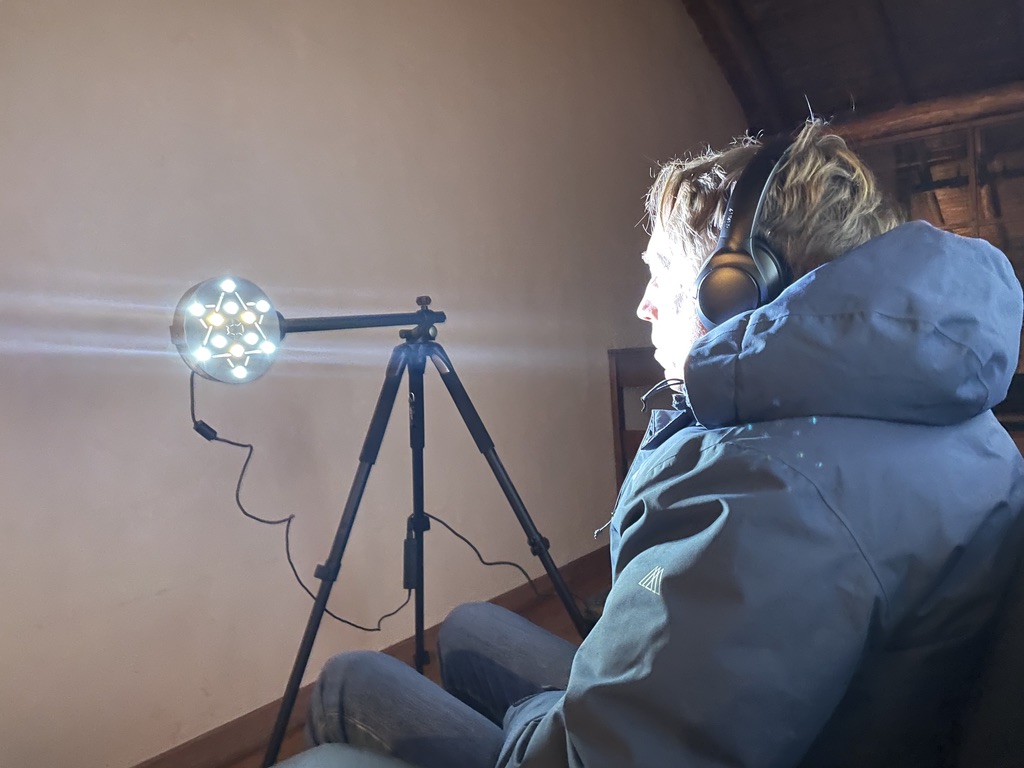
At Sapan Inka, we integrate the Pandora Star light as an auxiliary tool for preparing for your healing and growth experience, a valuable complement in our Ayahuasca retreats. The stroboscopic light emitted by this device stimulates brain activity, facilitating an effect known as brainwave synchronization. Research suggests that this synchronization can have positive effects, such as increased endorphin production, and it is believed to stimulate the pineal gland, an organ related to the endogenous production of DMT during deep states. This stimulation can generate mandala-like visual experiences, preparing the mind for a deeper immersion.
If you want to buy Pandora Star Light, contact us via WhatsApp.
The use of Pandora Star in our retreats has a precise purpose: to prepare the ground for the central work with Ayahuasca. It is fundamental to emphasize that the light sessions are always held before the ceremony, and never under the effects of the medicine. The induction of beneficial states of brain activity helps to balance emotions and expand consciousness, helping the body to become more sensitive to the effects of Ayahuasca medicine. Our work model is a synthesis of tradition and science, and the Pandora Star light is an example of how we use modern tools to enhance ancestral healing.

As guides for your process, our work is fundamental. The decision to use the Pandora Star light is a reflection of our commitment to the healing and transformation process. This is a professional act, not a simple activity. Our years of experience have taught us the importance of integral preparation, and this tool allows us to support you in the preparation of your being, respecting the authenticity of your process and providing a safe environment for your journey.ç
Despite the benefits, safety is our highest priority. Pandora Star sessions must always be conducted with your eyelids closed. It is essential to consult with a medical professional before participating if you have any doubts or if you have experienced epileptic seizures, severe head injuries, heart problems, if you are pregnant, or if you use a pacemaker. To rule out any risk, a photosensitivity screening test, such as an electroencephalogram (EEG), is suggested.